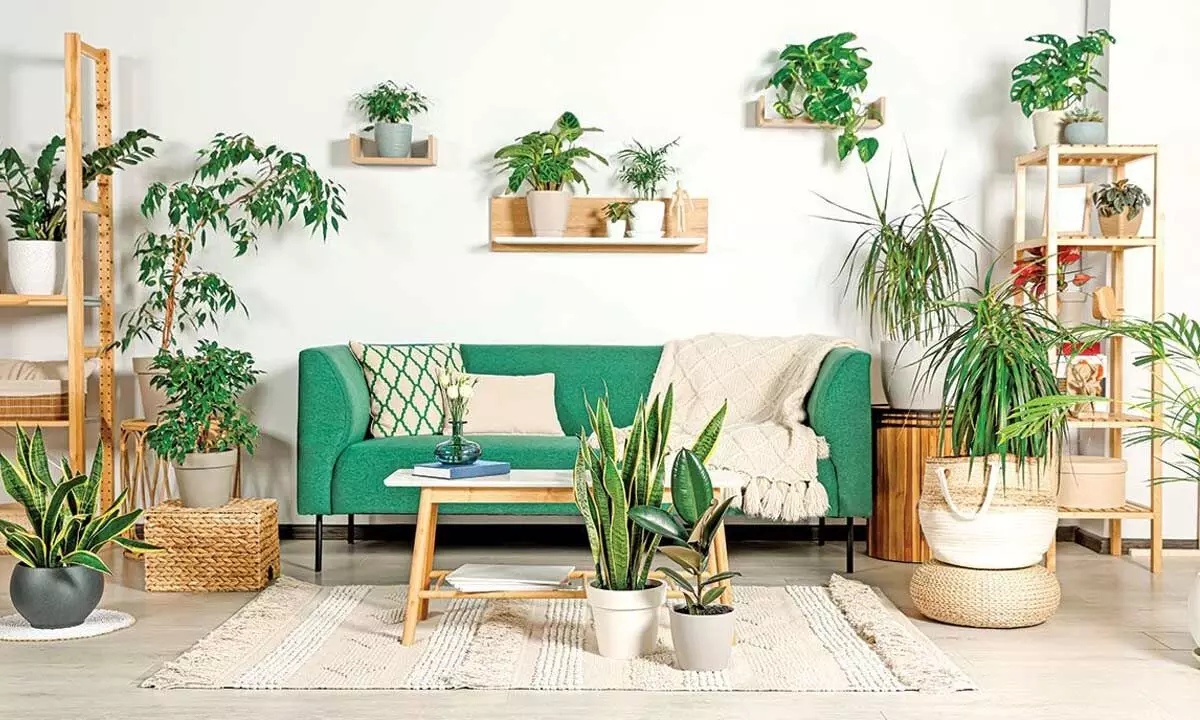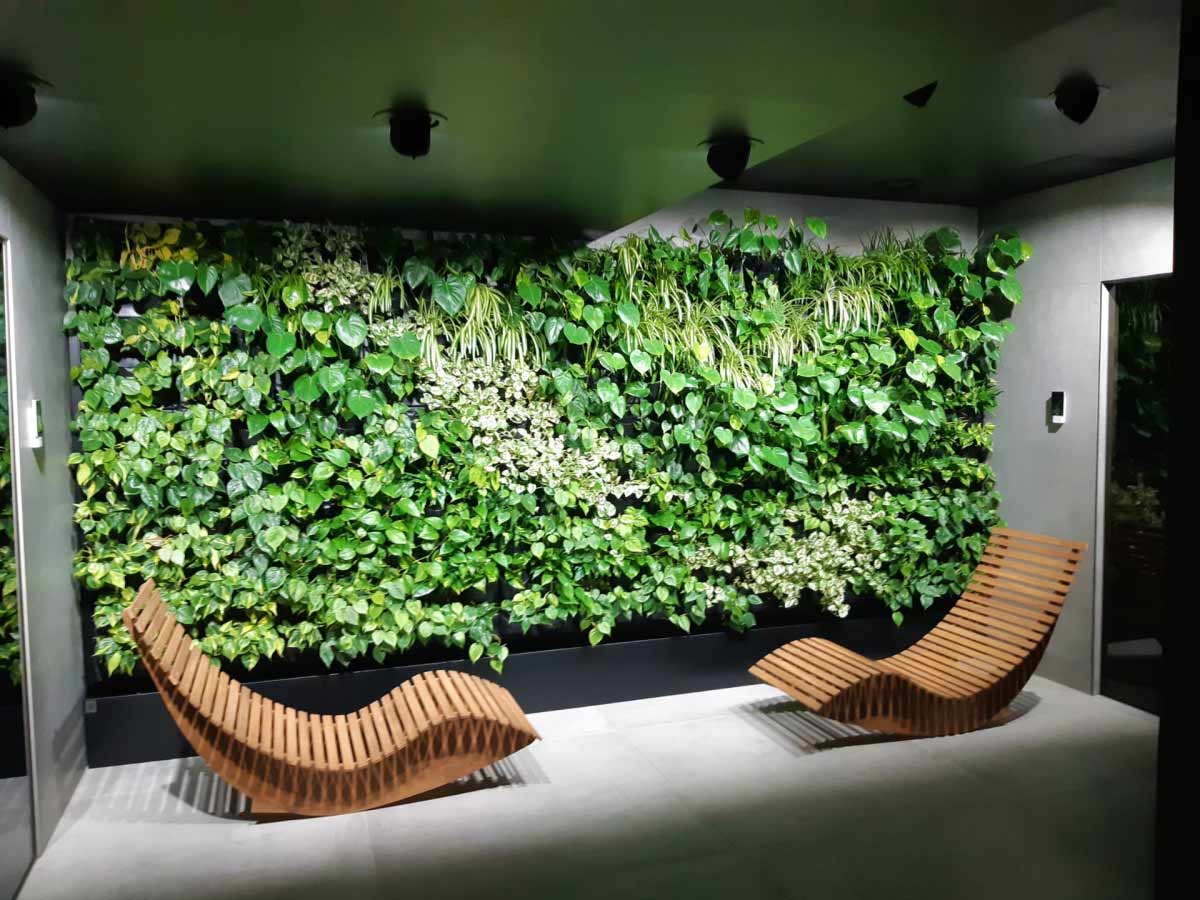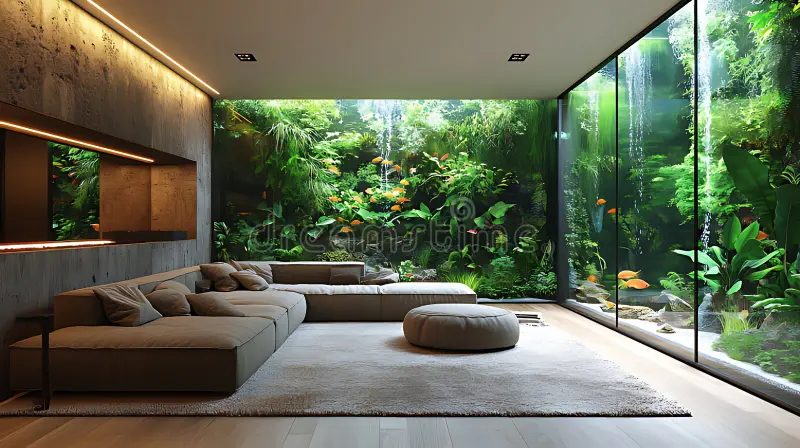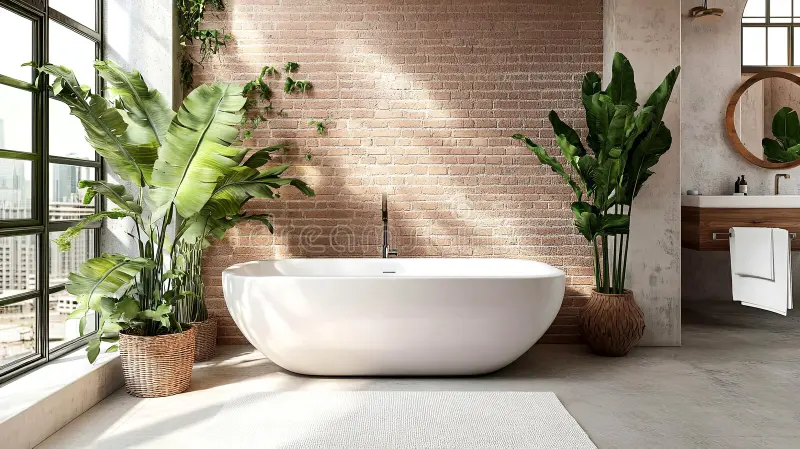Introduction: Reclaiming the Garden as a Living Sanctuary
In a world that grows louder, faster, and more digital every day, the modern garden is no longer just a backyard—it is a sanctuary. An intentional space of silence, texture, color, scent, and soul. It’s not a luxury for the elite; it is a necessity for the overwhelmed.
As more homeowners, designers, and urban dwellers seek peaceful places to reconnect, 2025 has redefined what it means to landscape with purpose. Gardens today are not only about beauty or status—they are therapeutic, productive, ecological, and at times, even technological.
This evolution brings us to a new philosophy of design—green sanctuaries, rooted in human wellness, environmental stewardship, and smart spatial thinking.
This part of the article focuses on grounding you in the key concepts, styles, and strategies behind successful modern gardens—before diving into tools, techniques, and advanced integrations in the next two parts.
The New Garden Mindset: Why Purpose Comes First
Forget the idea that gardens are just “decorative”. In 2025, every element of your outdoor space must serve your deeper needs.
🔸 Emotional Purpose
People now turn to their gardens for:
-
Restoration of mental health through nature immersion
-
Digital detox zones with no Wi-Fi or screens
-
Private reflection spaces integrated with water, fire, and stone
🔸 Functional Purpose
The most desired garden features today are:
-
Food production (herbs, greens, fruit trees)
-
Stormwater management through permeable surfaces
-
Multi-use spaces for yoga, writing, hosting, reading, and meditation
🔸 Social and Cultural Purpose
Landscapes are being shaped by:
-
Cultural storytelling through plants and materials
-
Outdoor dining rooms, ceremonial spaces, and community gardens
-
Mindful spaces that express family values or legacy
💡 Backlink Inspiration: Biophilic Design Trends – Architectural Digest explores how modern homes connect to nature through architecture and landscaping.

indoor green home-plants
Essential Styles and Themes for Modern Green Spaces
1. Minimalist Zen Landscapes
-
Fewer materials, more meaning
-
Crushed gravel, asymmetrical stepping stones
-
Black-stained timber or concrete benches
-
Japanese maple, moss, ferns, and bamboo
🪨 Pro Tip: Focus on negative space—what you leave out is just as important as what you add.
2. Climate-Conscious Mediterranean Gardens
-
Olive trees, lavender, rosemary, and thyme
-
Crushed granite paths and terracotta pots
-
Reclaimed wood trellises and vine canopies
-
Sun-reflective surfaces and drought-tolerant layouts
These gardens require less water and are ideal for hot, dry regions.
3. Immersive Cottagecore Forest Gardens
-
Layered vertical planting with vines, shrubs, trees, and flowers
-
Natural stone edges and mossy paths
-
Rain-fed ponds and bird-attracting trees
-
A sense of “intentional wildness”
This aesthetic celebrates imperfection, softness, and a return to nature’s logic.
4. Smart Urban Balconies and Vertical Farms
-
Wall-mounted edible planters
-
Micro-irrigation systems with app control
-
Stackable furniture for multi-use
-
Solar lights and compost systems
Perfect for urban dwellers wanting a personal Eden despite small space.

The-Vertical-Sanctuary-living-wall-design
Foundational Design Concepts to Master
A visually stunning garden means little if it lacks emotional flow. Here’s how top designers align form with function in 2025:
1. Movement and Circulation
Paths must guide more than feet—they guide mood.
Use changes in material (gravel, grass, wood) to:
-
Invite quiet exploration
-
Separate private and social zones
-
Slow down guests naturally
Avoid straight paths. Curves are gentle invitations to wander.
2. Focal Points with Meaning
Every space should have at least one anchor. It can be:
-
A mature tree with a circular bench
-
A sculpture with lighting accents
-
A pond with koi or a natural rock waterfall
Let your focal point be a reflection of your values, origin, or dreams.
3. Layering and Texture
Rather than planting in rows, think in three vertical levels:
-
Ground (mosses, low herbs, creeping thyme)
-
Mid (ferns, grasses, roses, lavender)
-
Tall (trees, shrubs, bamboo, flowering vines)
This creates an immersive, hug-like environment that draws people in.

modern-living-room-indoor-waterfall-lush-plants-fish-tank-relaxation-373694797
The Plant-Forward Philosophy: Your Garden as an Ecosystem
In 2025, a beautiful garden is a living, breathing organism, not a static design. That’s why modern landscapes prioritize native plants, biodiversity, and resilience.
| Principle | Why It Matters |
|---|---|
| Native species | Require less water, fertilizer, and care |
| Pollinator attraction | Supports bees, birds, butterflies |
| Seasonal interest | Garden changes with time, stays engaging |
| Soil health | Living soil boosts plant vitality |
🌱 Low-Maintenance but Lush: The New Gold Standard
Modern luxury isn’t excess—it’s ease. A well-designed low-maintenance garden should:
-
Require minimal mowing
-
Self-mulch with groundcovers
-
Be drought-resistant
-
Use smart irrigation and timers
-
Contain slow-growing species
Popular choices include:
-
Liriope
-
Sedum
-
Agave
-
Boxwood
-
Lavender
-
Eucalyptus
Backlink Suggestion: Low-Maintenance Landscape Ideas – Houzz shows how to balance beauty and simplicity.
Sustainability and Stewardship: Non-Negotiables in 2025
The most respected gardens today also protect our planet’s future. This isn’t a trend—it’s a moral obligation.
♻️ Eco-Conscious Materials
Use:
-
Recycled concrete, repurposed bricks
-
Sustainably harvested wood
-
Crushed glass mulch
-
Porous pavers that reduce runoff
Avoid:
-
Plastics, dyed mulches, synthetic turf, chemically-treated woods
💧 Smart Watering Systems
Modern gardens use:
-
Drip irrigation with soil sensors
-
Rain barrels connected to micro-sprayers
-
Greywater recycling for non-edible plants
Apps like Hydrawise, Rachio, and Netro allow precise control, weather adaptation, and water conservation.

serene-bathroom-sanctuary-featuring-cozy-white-tub-lush-green-plants-sunlit-brick-wall-perfect-unwinding-relaxation-367254059
🌿 Composting and Soil Life
Healthy gardens begin underground.
Encourage:
-
Composting with kitchen and garden waste
-
Soil inoculation with microbes and mycorrhizae
-
“No-dig” methods to preserve worm tunnels and soil carbon
A living soil feeds your plants naturally.
Closing Part 1: Setting the Soul of Your Sanctuary
Before you pick up a shovel or place a stone, stop and ask:
-
What feeling should this space evoke?
-
Who is this garden really for—your guests, your family, or your soul?
-
Can this space heal as much as it impresses?
Introduction: Turning Concepts Into Earthly Art
Now that we’ve established the philosophical and ecological foundation of the modern garden, it’s time to dig deeper—literally. In this part, we translate intention into action. You’ll discover how to:
-
Create precise garden layouts that align with real-life needs
-
Use cutting-edge tools and technologies without compromising natural charm
-
Select furniture, lighting, and irrigation that elevate beauty and utility
-
Build for longevity while minimizing maintenance and environmental impact
This section is your blueprint of implementation—where soulful design meets smart execution.
Designing the Living Blueprint: Spatial Flow and Zoning
Every garden, no matter the size, needs a thoughtful structure. In 2025, that means thinking like an architect and like a poet—practical and emotive at once.
🔸 Zones with Intention
Define 3 core zones:
| Zone Type | Key Features |
|---|---|
| Quiet zone | Reading bench, meditative fountain, shaded arbor |
| Social zone | Outdoor table, fire pit, grill, flexible seating |
| Functional zone | Tool shed, compost, rainwater tank, vegetable beds |
Design each zone for a single clear purpose, but allow for flexible overlaps.
🔸 Natural Circulation Patterns
Your pathways should:
-
Avoid right angles
-
Create a sense of discovery
-
Encourage slow movement
-
Be wide enough for accessibility (especially for wheelbarrows and wheelchairs)
Material ideas:
-
Stepping stones set into creeping thyme
-
Crushed oyster shell or gravel
-
Flagstone softened by moss edges
Pro tip: Use lighting and low hedges to guide people without fences.
Smart Tools for Modern Gardeners
Today’s gardener is part artist, part scientist—and they’re armed with elegant tech.
🌿 Essential Smart Devices for 2025
| Tool | What It Does | Brand Examples |
|---|---|---|
| Smart irrigation system | Waters based on moisture and weather | Rachio, Netro, Orbit B-hyve |
| Solar path lights | Illuminate walkways with zero electricity cost | Ring, GIGALUMI, Brightech |
| Soil sensor meters | Tracks moisture, pH, temperature | ECOWITT, Xlux, Atree |
| App-controlled mowers | Automates lawn care, avoids overcutting | Husqvarna Automower, Worx Landroid |
| Vertical garden controllers | Manages light and watering for edible walls | Rise Gardens, OGarden |
🛠️ Sustainable Manual Tools That Still Matter
Even with smart gear, every garden must have:
-
A hori-hori knife for multi-purpose digging and cutting
-
A bypass pruner (Japanese steel recommended)
-
A broadfork to aerate soil without tilling
-
A multi-compartment garden bag for efficient movement
Old-world craftsmanship remains irreplaceable in planting and tending.
Furniture That Breathes with Nature
Forget plastic chairs and synthetic fabrics. Outdoor furniture in 2025 is organic, modular, and deeply sensory.
🔸 Materials That Belong
| Material | Vibe | Benefit |
|---|---|---|
| Teak or acacia wood | Timeless and warm | Naturally weather-resistant |
| Polished concrete | Modern and minimal | Thermal mass helps regulate temperature |
| Rattan and jute | Earthy and soft | Lightweight and biodegradable |
| Recycled aluminum | Sleek and urban | Low maintenance and rust-proof |
Cushions are now made with:
-
Organic cotton canvas
-
Hemp fiber
-
Natural latex foams
-
UV-treated, non-toxic dyes
🔸 Layout Strategy
Arrange seating for:
-
Conversation (circular or L-shapes near fire or water features)
-
Solitude (one bench under a tree, hammock between posts)
-
Meditation or yoga (open flat surface with minimal visual noise)
Balance sun and shade, and ensure every zone has a sensory appeal—a scent, a sound, or a view.
Lighting: Crafting Mood and Mystery After Dark
Good garden lighting is like cinematography—it sets emotion, reveals texture, and highlights story.
🔹 Types of Lighting to Layer
| Lighting Type | Placement | Emotional Effect |
|---|---|---|
| Path lighting | Along walkways | Safety and welcome |
| Uplighting | Beneath trees or sculptures | Drama and mystery |
| Downlighting (moonlight) | From overhead trees or pergolas | Soft intimacy |
| Water reflection lights | Inside ponds or near basins | Tranquility and movement |
| Candle clusters | On tables or lantern posts | Romance and softness |
Use solar or low-voltage LED wherever possible. Integrate lighting into stone walls, steps, and planter edges for subtlety.
💡 Backlink Reference: Modern Outdoor Lighting Concepts – Gardenista breaks down ambient vs task vs accent lighting for gardens.
Irrigation and Water Consciousness
In many regions, water is the new gold. Designing with this in mind ensures beauty doesn’t come at the planet’s expense.
💧 Smart Irrigation Hierarchy
-
Passive design: Mulch, drought-resistant plants, swales
-
Micro-irrigation: Drip emitters and bubblers
-
Sensors: Measure soil before watering
-
Timers synced to weather: Avoid wasteful schedules
All of this can be automated via Bluetooth or Wi-Fi apps with real-time control and alerts.
💦 Embracing Water Features
Water doesn’t always mean excess. A single element can transform a garden’s mood:
-
Still basin carved from stone = reflection and silence
-
Trickle fountain powered by solar = movement and sound
-
Rain chain = elegance in stormwater management
-
Pondless waterfall = drama with zero standing water
Use water where it heals, not just where it decorates.
Hardscaping with Soft Soul
Hardscaping is often misunderstood as the “cold” part of landscaping. But in 2025, it is the spiritual skeleton of outdoor spaces.
🪨 Sustainable Hardscape Materials
| Material | Best For | Bonus Points |
|---|---|---|
| Permeable pavers | Driveways, patios | Reduce flooding and runoff |
| Reclaimed brick | Edges, borders, pathways | Vintage charm and lower footprint |
| Local stone | Retaining walls, benches | Blends with native geography |
| Stabilized gravel | Walking paths, patios | Affordable, flexible, and natural |
Avoid harsh geometry. Go for curves, nesting forms, and asymmetry. Let nature’s organic shapes guide your layout.
Table: 2025 Garden Design Trends Overview
| Trend | Description & Impact |
|---|---|
| Climate-resilient planting | Adaptive species reduce water and chemical use |
| Integrated wellness zones | Gardens double as mental health sanctuaries |
| Smart garden tech | Apps control watering, lighting, and soil care |
| Edible landscape integration | Veggies and herbs blend with ornamental beds |
| Textured natural lighting | Creates storytelling at night through shadowplay |
| Biophilic hardscaping | Paths mimic natural forms and geological textures |
| Zero-lawn designs | Replace grass with micro-meadows, thyme, or sedum |
Closing Part 2: From Lines on Paper to Living Poetry
You now hold the tools—literal and metaphorical—to shape the land with purpose and precision. You’ve learned:
-
How to divide space with elegance
-
Which tools and materials bring beauty and durability
-
How to think ecologically and emotionally about furniture, light, and water
Introduction: A Garden That Lives Without You
By now, you’ve shaped your garden with vision, intention, and care. But the true mastery lies in designing a space that doesn’t demand constant upkeep—a garden that thrives even when you step away. In this final part, we explore how to:
-
Maintain beauty with minimal effort
-
Invite life—butterflies, birds, bees—into your green world
-
Create rituals for joy and mental well-being
-
Future-proof your design in the face of climate and lifestyle changes
Low-Maintenance, High-Reward Gardening
The future of landscaping is not about endless pruning and watering. It’s about resilience and intention.
🔸 The Lazy Genius Approach
Use these four pillars of effortless elegance:
| Strategy | Why It Works |
|---|---|
| Mulch generously | Retains moisture, suppresses weeds, looks elegant |
| Drought-tolerant plants | Thrive with minimal water input |
| Perennials over annuals | Regrow year after year, no replanting hassle |
| Native species only | Require no extra feeding or pesticide control |
Add slow-release organic fertilizers (like worm castings or bone meal) twice a year—and let nature do the rest.
🔸 Plant Once, Enjoy Forever
Choose these resilient show-stoppers for visual and functional reward:
| Plant Type | Great Picks |
|---|---|
| Ground cover | Creeping thyme, blue star creeper, sedum |
| Shrubs | Lavender, boxwood, rosemary |
| Climbers | Clematis, honeysuckle, native jasmine |
| Pollinator magnets | Coneflower, milkweed, bee balm, black-eyed Susan |
For functional beauty, integrate:
-
Edible herbs along borders
-
Berry-producing shrubs for wildlife
-
Grasses for texture and movement
Welcoming Wildlife Into the Garden
A true garden isn’t just for humans. It becomes sacred when it feeds and shelters life.
🐝 Pollinator-Friendly Tactics
-
Avoid pesticides altogether
-
Plant a wide range of flowering plants with overlapping bloom times
-
Include bee hotels or bare patches of earth for native bees
-
Offer shallow dishes with pebbles and water for butterflies
🦉 Attracting Birds and Beneficial Insects
| Wildlife Type | Attract By… |
|---|---|
| Songbirds | Bird feeders, native fruiting trees, safe perches |
| Hummingbirds | Trumpet-shaped flowers, sugar water in feeders |
| Ladybugs | Dill, fennel, or yarrow plantings |
| Frogs | Small water features with shady hiding spots |
Use natural fencing like hedgerows or tall grasses to provide wind shelter and predator protection.
Seasonal Garden Rituals and Emotional Wellness
Gardens aren’t just places to plant—they are emotional temples. Here’s how to form annual and seasonal rituals that keep you in love with your sanctuary.
🌼 Spring: Awakening
-
Prune lightly
-
Sow hardy seeds
-
Reaffirm your intentions with a cup of tea in your garden at sunrise
☀️ Summer: Celebration
-
Host a solstice dinner outdoors
-
Add a wind chime or scented candle to every zone
-
Observe bees, journal their patterns
🍂 Fall: Gratitude
-
Rake gently, leave leaf piles for insects
-
Harvest herbs, dry them for winter
-
Write down 3 lessons the garden taught you
❄️ Winter: Reflection
-
Add bird seed and suet
-
Light lanterns in the snow
-
Sketch new ideas in a garden journal
These seasonal habits turn gardening from a chore into a living relationship.
Futureproofing: Climate and Lifestyle Ready
A modern garden must be both adaptable and regenerative. Here’s how to build one that remains timeless even as the world changes.
🌀 Climate-Resilient Features
| Concern | Smart Response |
|---|---|
| Heatwaves | Add shade sails, tall grasses, and mulch |
| Heavy rain | Use swales, permeable paving, and French drains |
| Drought | Replace lawns with native meadow alternatives |
| Wind | Plant living windbreaks like hedge rows |
Design modular beds and movable furniture to adapt layouts with changing seasons or mobility needs.
🧠 Garden Automation for Peace of Mind
Install a fully integrated smart system that controls:
-
Irrigation based on moisture sensors
-
Lighting set to circadian schedules
-
Security cameras to monitor garden gates and sheds
-
Weather alerts to notify of frost or storm threats
Use platforms like Apple HomeKit, Google Nest, or SmartThings to centralize control.
Frequently Asked Questions (FAQ)
Q: What is the best layout for a small urban garden in 2025?
A: Use vertical planting (trellises, walls, stacked planters), a central focal point (like a ceramic basin or bench), and container zones that can be easily rearranged. Maximize light reflection with pale walls or mirrored panels.
Q: Can I make a low-maintenance garden that’s also edible?
A: Absolutely. Stick with perennial edibles like chives, rhubarb, asparagus, rosemary, and sorrel. Add fruiting shrubs like blueberries and dwarf figs. Use mulch to minimize weeding.
Q: What’s the best lawn replacement for 2025?
A: Creeping thyme, clover mixes, or micro-meadows made from native wildflowers and grasses. These options require little to no mowing and feed pollinators.
Q: Is it worth investing in smart garden tech?
A: Yes—especially for busy homeowners. It reduces water waste, improves plant health, and alerts you before issues arise. It also makes gardens more inclusive for older or disabled users.
Q: How can I use lighting to improve security?
A: Use motion-sensor solar lights along fences and behind hedges. Path lights with timers deter trespassers. Integrate low-voltage lights into hardscape edges for visibility without harsh glare.
Conclusion: Your Garden, Your Legacy
In 2025, a garden isn’t just a patch of plants—it’s an act of personal and planetary love.
You’ve now mastered:
-
How to design with flow, zones, and natural intelligence
-
How to automate and futureproof your space with smart tools
-
How to maintain beauty effortlessly while inviting nature back
-
How to turn gardening into a lifelong ritual of joy and connection
This isn’t just landscaping—it’s land-shaping, mind-shaping, and life-shaping.
📹 Watch This
For visual inspiration and step-by-step guides, we recommend this curated YouTube video:


